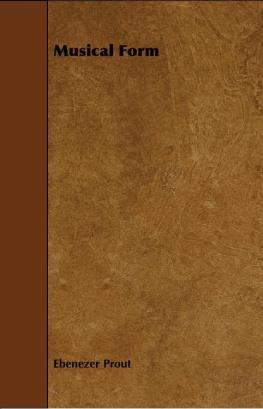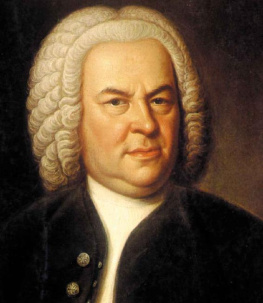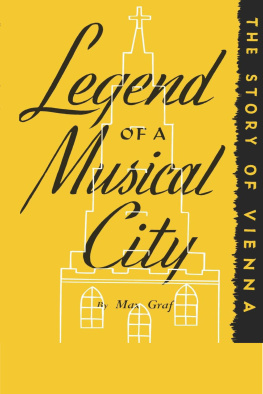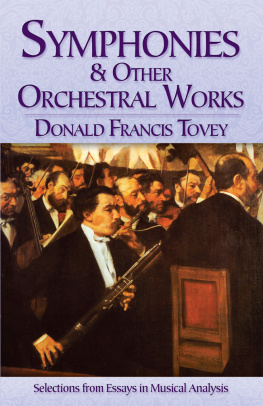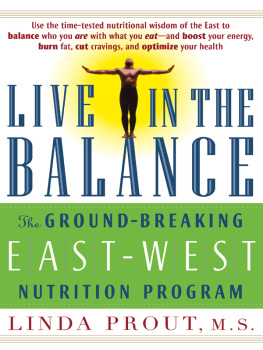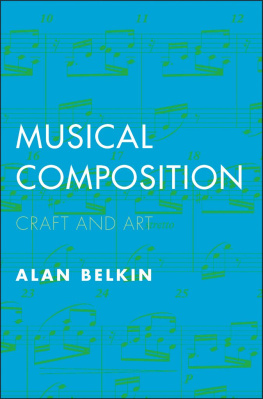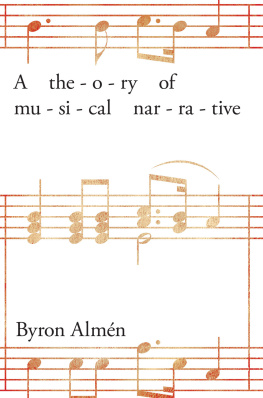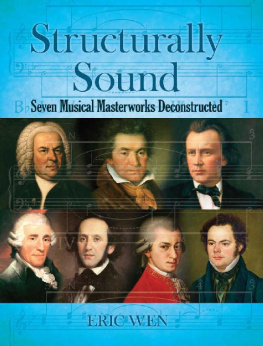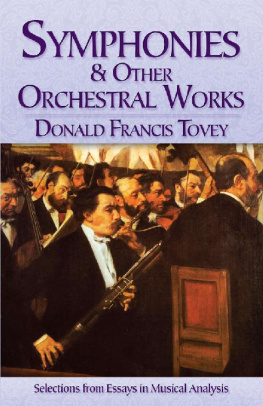Ebenezer Prout - Musical Form
Here you can read online Ebenezer Prout - Musical Form full text of the book (entire story) in english for free. Download pdf and epub, get meaning, cover and reviews about this ebook. year: 2013, publisher: Owen Press, genre: Art. Description of the work, (preface) as well as reviews are available. Best literature library LitArk.com created for fans of good reading and offers a wide selection of genres:
Romance novel
Science fiction
Adventure
Detective
Science
History
Home and family
Prose
Art
Politics
Computer
Non-fiction
Religion
Business
Children
Humor
Choose a favorite category and find really read worthwhile books. Enjoy immersion in the world of imagination, feel the emotions of the characters or learn something new for yourself, make an fascinating discovery.
- Book:Musical Form
- Author:
- Publisher:Owen Press
- Genre:
- Year:2013
- Rating:5 / 5
- Favourites:Add to favourites
- Your mark:
- 100
- 1
- 2
- 3
- 4
- 5
Musical Form: summary, description and annotation
We offer to read an annotation, description, summary or preface (depends on what the author of the book "Musical Form" wrote himself). If you haven't found the necessary information about the book — write in the comments, we will try to find it.
Musical Form was written in 1893 and is almost entirely practical, and points of theory are hardly touched upon.
Musical Form — read online for free the complete book (whole text) full work
Below is the text of the book, divided by pages. System saving the place of the last page read, allows you to conveniently read the book "Musical Form" online for free, without having to search again every time where you left off. Put a bookmark, and you can go to the page where you finished reading at any time.
Font size:
Interval:
Bookmark:
AUGENERS EDITION No. 9187.
BY
EBENEZER PROUT
B.A. Lond.
(Hon. Mus. Doc. Trin. Coll. Dublin and Edinburgh, and Professor of Music in the University of Dublin.)
FIFTEENTH IMPRESSION



THE preceding volumes of this series have dealt chiefly with matters of musical theory, though theory and practice are so closely connected that it is impossible to draw a hard and fast line of demarcation between them. The present volume, on the other hand, is almost entirely practical, and points of theory are hardly touched upon.
None of the earlier works of the series have involved anything like the amount of labour in their preparation that has been needful for this one. Very little is to be found in English musical literature concerning the subjects which occupy the greater part of the volume; and the materials had to be compiled partly from large German treatises on composition, which, however interesting and instructive, can certainly not be considered as light reading, and, to a still larger extent, from the careful and often minute analysis of the works of the great masters. This, it is hoped, will be deemed a sufficient apology for the delay in the appearance of the present volume.
In dealing with the subject of Musical Form, the author felt that the only satisfactory and logical method was to begin with the rudiments. Rhythmthat is, the more or less regular recurrence of cadence, is as much an essential of music as it is of poetry. The first part of this volume is therefore devoted to an examination of the fundamental principles of Rhythm, as shown in the construction of musical phrases and sentences. Such an examination would have been incomplete without the analysis of a musical sentence into its ultimate constituentsthe motives In his treatment of this part of the subject the author must express his deep indebtedness to the researches of Dr. Hugo Riemann. He believes that this distinguished German theorist has been the first to recognize fully the true nature of the motive, and the connection of its unaccented notes, not with the preceding, but with the following accented note. With this view which is fully explained in the third chapter of the present volume, the author most emphatically agrees; and its comprehension and acknowledgment make clear many things in the works of the great composers which otherwise appear incorrect, or atleast difficult of justification (see, for instance, the passages quoted in 64, 65). While differing in many details from Dr. Riemann as to its application, the author believes the principle itself to be of such importance that it is hardly too much to say that the whole teaching of this volume stands or falls by the acceptance or rejection of the views here set forth as to the nature of the motive.
To the analytical method followed up to this point succeeds the synthetical. Having divided sentences into motives, the next thing is to build up motives into sentences. But, inasmuch as many sentences contain modulations, it was first necessary to go fully into the whole question of key-relationship and modulation. These matters had been partially treated in . of Harmony (which, however, dealt only with nearly related keys), and, incidentally in later chapters of the same book. The author felt that a more systematic and thorough investigation of the subject was desirable here; and three chapters of this volume are therefore devoted to its consideration. While it was evidently impossible to explain or classify every possible modulationfor it cannot be said that the possibilities are even yet exhaustedit is hoped that the student will find in these chapters sufficient guidance for all practical purposes.
Only those who have investigated the subject will have any idea how much variety is possible in the construction of a simple sentence of the regular rhythm of eight bars. The different forms of the eight-bar sentence are treated of in Chapter VII., and illustrated by a large number of examples from the works of the great composers. To these are added sentences of twelve and sixteen barsthat is to say, such as contain three or four four-bar phrases, instead of only two. These may be regarded as extensions of the normal sentence; but it seemed more suitable to include them in this chapter than to class them among the irregular rhythms.
The construction of phrases and sentences of other than the normal length, though often incidentally referred to in other books, has not, so far as the author is aware, been systematically treated and fully accounted for in any book in our language One of the longest chapters in the present volume is therefore devoted to this subject, the difficulties of which, it is believed, are more apparent than real. It is hoped that the explanations here given will smooth the path of the student of analysis, and will also indicate to the young composer the principles which must guide him in ascertaining whether any sentence of irregular length which he may have written be correct or not. For the excellent and clear method of indicating the nature of these irregular rhythms by means of figures placed under the bars, the author is again indebted to Dr. Riemann.
The last two chapters of the present volume treat of the two typical formsthe Binary and the Ternaryout of which all others are developed. Hardly two authorities are in exact agreement as to the definition of these two forms; and the author dares not venture to hope that the lines here laid down will be universally accepted as correct. But the plan adopted in these chapters has at least the advantage of being intelligible and consistent, and is the result of much thought, and of a careful examination of a large number of movements by the great composers. It was found impossible to establish a clear line of demarcation between the two forms, except by considering the Ternary as an extension, and not a variation, of the Binary.
An explanation may perhaps be desirable of the reasons why no fewer than nine complete movements, some of which are very familiar, are given in full in the last chapter of this book. In the first place, it was felt that, if the movements in question were only referred to, many readers would either not have them in their libraries, or would not have them at hand for reference; and even of those who had the music, it is probable that many would not take the trouble to take it down from the bookcase and refer to it. But the principal reason was, that, by giving the pieces entire, an opportunity was afforded, such as otherwise would have been quite impossible, of practically illustrating the principles laid down in Chapter VIII. as to the construction of sentences of irregular length. Every one of these nine pieces is furnished with a complete rhythmical analysis of all its sentences; and the student who will take the trouble to follow these analyses carefully will find comparatively little difficulty in analyzing for himself any compositions which he may be studying. No perfection is claimed for the analyses here given; very often more than one division into phrases, &c., is possible; but the methods described in the eighth chapter have been systematically adhered to; and the results will at least be found to be intelligible and consistent.
As the present work treats chiefly of the fundamental principles of form, the practical application of these principles, as we find them in the larger works of the great masters (symphonies, quartetts, sonatas, &c.), does not come within the scope of this volume. This will be dealt with in the next volume of this series, which will be devoted to what are generally known as
Next pageFont size:
Interval:
Bookmark:
Similar books «Musical Form»
Look at similar books to Musical Form. We have selected literature similar in name and meaning in the hope of providing readers with more options to find new, interesting, not yet read works.
Discussion, reviews of the book Musical Form and just readers' own opinions. Leave your comments, write what you think about the work, its meaning or the main characters. Specify what exactly you liked and what you didn't like, and why you think so.

